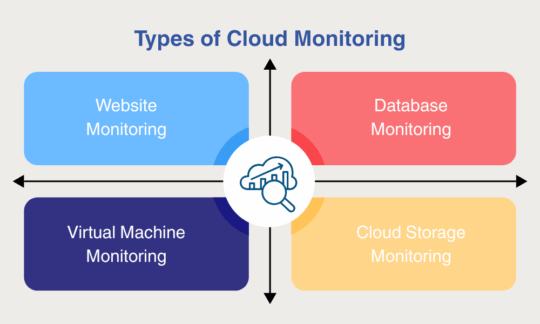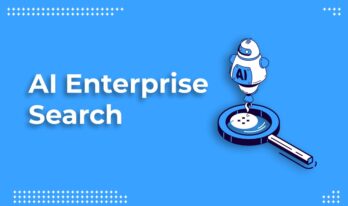Modern business is dependent on cloud platforms for an efficient day-to-day business.
Thus, it is of utmost importance to uphold your cloud platforms’ security to protect your daily business operations. That is why cloud monitoring is important and should be done periodically.
Let us answer some of the basic questions related to cloud monitoring.
Cloud monitoring can thus be explained as the process wherein the health of your cloud platforms is evaluated through tools.
By monitoring cloud platforms, organizations can be sure about the availability, performance as well as security of their cloud platforms.
It is of high importance for any business to not only track the hardware status, like hardware’s, network switches, but also track resources across multiple devices in multiple locations.
Below mentioned are some of the key types of cloud monitoring:
• Website Monitoring
The website can be better explained as the file set that has been stored on the host computer.
The host here can be either a local computer or the one that is being operated by a cloud service provider.
Website monitoring assists website owners to serve their customers better in real-time by altering any current strategy or modifying any of the contents.
• Database Monitoring
This type of monitoring assists users in keeping their data updated.
This technique assists users in reviewing queries, consumption and availability of cloud database resources.
• Virtual Machine Monitoring
This monitoring assists users in identifying virtual machines that are fetching resources but are not spitting out any value.
Moreover, users will also be updated on any root cause for any performance issues.
• Cloud Storage Monitoring
This technique updates the users about the storage resources.
It involves multiple devices used for storage in a single virtual storage space.
Also Read: Cloud migration challenges: Every user needs to know
Some of the key benefits of cloud monitoring are as under:
- Increased scaling for any organization size.
- Monitoring of multiple devices from a single location.
- No more system interruptions due to any local resource problem as they are no longer attached to the organization’s infrastructure.
- Low costs as users can take subscription plans.
- Easy installations as other resources are already in place.
Some of the best cloud monitoring practices a user needs to follow are as under:
Identify the metrics that provide you with useful information.
While using the tools for the same users need to note what is being recorded and tracked by it.
Also, users should see whether the information being recorded will be useful for them.
While shifting the business model from premises to the cloud platform, users should also integrate the on premise infrastructure with the cloud environment.
The monitoring software should be able to normalize the cloud data with that of traditional metrics data and treat this data the same way as it shall do to other sources.
Automation plays a key factor in the modern tech world.
Repetitive tasks can be automated so that the tasks that demand more human intervention can be attended to.
Some of the tasks that can easily be automated and should be automated are self-restarting, stopping any cloud service in case of any threshold violation.
Some of the key KPI’s that need to be monitored are:
-
- Network KPIs: these will inform users about bytes that were sent and received on the networks.
- CPU KPIs: these will update the users about the utilization of CPU.
- Billing KPIs: they will update users about the usages, credit balances and charges.
- System Integrity KPIs: these shall update users about the health of the systems.
Users would find plenty of tools available in the market for monitoring purposes.
Some of these tools will assist you in measuring a full range of services, whereas some will only assist you in monitoring some parts of cloud stacks.
Some of the key features users need to look for in monitoring tools are as under:
-
- Easy Installations: monitoring tools should be easy to install.
- Easy Interface: should provide users with an easy interface.
- Automate tasks: This should assist users in automating some of the tasks.
Most of the tools only store the data for a limited time.
Users should adopt such tools that store the collected data for a maximum time.
Data stored for a particular month needs some time to evaluate, that’s why users need to implement such a tool that is capable of storing data for a maximum time.
Alerts are necessary for every IT function.
IT teams should be able to receive updates on time in case of any anomaly detection.
Organizations should be and always should evaluate the end user experience.
Users should monitor metrics like response times and usage frequency.
End-user experience updates you about network utilization and provides updates on digital infrastructure performance.
An ideal monitoring tool will guide users about costs and should be capable of monitoring it properly.
Moreover, the usage of costs should be notified by tool too in case the costs cross budgets.
This will assist users in managing cloud budgets accordingly.
Users should also test their tools functioning in event of any failures.
Also, users should evaluate its response in terms of any such failure.
Conclusion
Monitoring the status of your cloud platform is very important, as it safeguards you against any cyber-attacks. Above mentioned steps will assist users inefficient monitoring of their cloud platforms.
Also Read:





